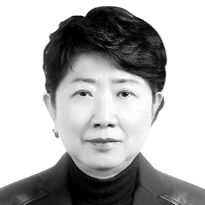[Column] Four rational tracks to raise physician-scientists

Park In-sook
The author is an honorary professor at University of Ulsan’s College of Medicine.
A plan to open new medical schools at the Korea Advanced Institute of Science & Technology (KAIST) and Pohang University of Science and Technology is being discussed. It is a measure presented after the government stressed the importance of educating more physician-scientists to improve national competitiveness in the cutting-edge bio industry. The intention is right, but the method is wrong. The fastest and most effective way to produce more physician-scientists is to reorganize and expand the existing programs and increase government support.
Currently, there are four tracks in the training of physician-scientists. First, medical doctors who have completed the residency training receive research training in the department of biotechnology and find a job at a hospital or a medical school to devote themselves to research without clinical service. Such a program was started by Asan Medical Center in Seoul several years ago. For instance, under a business agreement, medical doctors have been conducting research at KAIST for years and then returning to the hospital to continue their research. There are already about a dozen such people.
Second, students study basic science or bioscience at universities, enter medical schools to complete their medical studies and become researchers. Cha University is already producing many physician-scientists through this track.
Third, graduates of medical schools start research at their schools or science and technology schools like KAIST, to become physician-scientists. The method has been used for decades.
Fourth, a new track was recently started by the University of Ulsan College of Medicine. Undergraduate medical students study basic science through a credit exchange program with the Ulsan National Institute of Science and Technology (UNIST). It helps them find a path early in their college career.
These programs are already producing great outcomes, and their prospects are bright. When there is a good program, it is reasonable for the government to provide support to develop it further. The government’s active funding of research of aspiring physician-scientists and guaranteeing their job safety are the most needed support.
Due to the nature of private hospitals, physician-scientists who do not make profits by treating patients but only do research are burdensome for their business management. When hospitals’ businesses become difficult by making efforts to train physician-scientists, there is no guarantee that the management will not ask them to treat patients. Therefore, the government must share some burden for the hospitals and medical schools that are making active attempts to train physician-scientists.
Every year, about 3,000 brightest students in the country enter medical schools. Among them, there must have been a young man who could win the Nobel Prize. There must have been some youngsters who could have developed future technology, such as artificial intelligence, to advance human civilization a step further.
It is a waste for both individuals and the country that such talented people become medical doctors and only engage in clinical care. It is more desirable that such talented people will commit themselves to research and produce academic accomplishments to restore health for many patients rather than treating patients. This is even more so when we consider the infinite economic values of medical science and engineering.
It’s been more than a decade since a heated debate started about creating a new medical school. However, opening a new medical school is nothing more than a repeated campaign pledge of elected officials. No matter how many medical schools are newly opened, there is of no use if the authorities do not force graduates to devote themselves to research by giving up clinical service after they receive medical licenses.
Opening new medical schools will only increase the number of private clinic physicians of some popular departments. Which one would be more efficient between supporting talented people who want to become physician-scientists and forcing students uninterested in medical science to do research instead of opening private clinics after they graduate from medical school?
Politicians stress the need for new medical schools but do not discuss the cost. Opening a medical school is far more difficult than opening any other college. One medical school requires at least 140 — and sometimes as many as 840 — professors. Seonam University’s School of Medicine had to shut down because it lacked faculty and a teaching hospital. When we use just a portion of the fund needed to open a new medical school, we can support the talented people who voluntarily choose to become physician-scientists.
The political debate on opening new medical schools must end right now. There are many talented people who wish to become physician-scientists among medical students and interns.
Translation by the Korea JoongAng Daily staff.










with the Korea JoongAng Daily
To write comments, please log in to one of the accounts.
Standards Board Policy (0/250자)